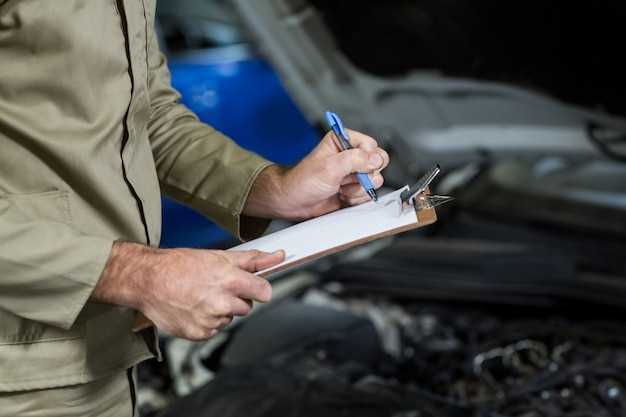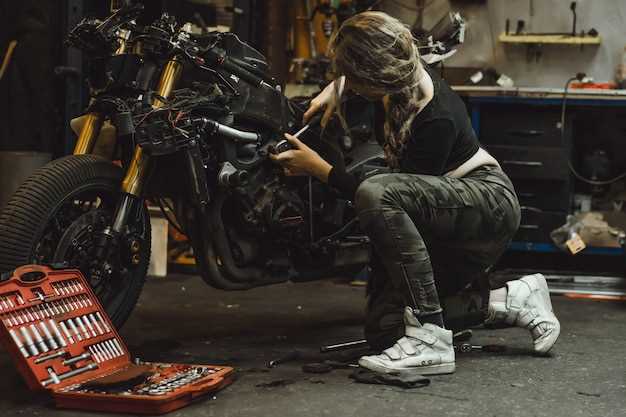
When it comes to the world of automotive customization, hot rods and resto-mods hold a unique place in the hearts of enthusiasts. These vehicles represent not just a mode of transportation, but a canvas for personal expression and mechanical innovation. An effective inspection process is crucial for ensuring that these custom creations are not only visually appealing but also safe and reliable on the road.
As you dive into the inspection of your classic ride, it is essential to pay attention to both the aesthetics and the structural integrity of the vehicle. The modifications made to hot rods and resto-mods often involve significant changes to their original design, which can impact performance and safety. By conducting a thorough examination, you can identify potential issues and enjoy your custom vehicle with peace of mind.
This guide will provide you with a comprehensive overview of the key areas to focus on during your inspection, including engine components, suspension systems, and bodywork. Understanding these elements will empower you to make informed decisions about maintenance and upgrades, allowing your hot rods and resto-mods to shine both on and off the road.
Evaluating Engine Performance and Modifications
When inspecting hot rods and resto-mods, engine performance evaluation is crucial. A comprehensive assessment starts with a visual inspection of the engine itself. Look for any signs of leaks, corrosion, or modifications that indicate previous performance upgrades. Custom modifications can enhance engine power but may also affect reliability.
Next, assess the engine’s compression levels using a compression gauge. Healthy compression readings are vital for optimal performance. Any significant discrepancies among cylinders may indicate internal issues, requiring further investigation.
Monitoring exhaust emissions provides insight into engine efficiency. Use an exhaust gas analyzer to measure levels of hydrocarbons, carbon monoxide, and nitrogen oxides. Elevated emissions can suggest tuning issues or inefficient combustion, often seen in modified engines.
Dyno testing is another excellent method to evaluate performance accurately. A dynamometer measures horsepower and torque, providing data on how modifications impact the engine’s output. This data allows for informed decisions about future upgrades or tuning adjustments.
Don’t overlook ignition timing and fuel delivery systems. Inspect spark plugs for wear and correct gap settings and ensure fuel injectors or carburetors are functioning properly. Modifications in these areas can lead to significant changes in engine performance, impacting overall vehicle functionality.
Finally, driving tests can reveal a lot about engine behavior under real conditions. Pay attention to throttle response, idle quality, and any unusual sounds. A hot rod’s performance is not solely about raw power; smooth operation and driver experience also matter.
Assessing Chassis and Suspension Integrity

When evaluating the integrity of a hot rod’s chassis and suspension, it is critical to begin with a comprehensive visual inspection. Look for signs of rust, cracks, or any damage to the frame. A custom chassis often alters factory designs, so confirm that modifications are executed correctly and meet safety standards.
Next, examine the suspension components, including control arms, springs, and shock absorbers. Ensure that mounts are secure, and there is no excessive wear on bushings or joints. Pay close attention to the alignment of components, as misalignment can lead to handling issues and accelerate wear on tires.
Testing the Flexibility
Assess the flexibility of the chassis under load. A solid structure should remain rigid, with minimal flex, while a compromised chassis may exhibit unwanted movement. If possible, employ tools such as a torque wrench to evaluate bolted connections to ensure they meet specified torque settings.
Checking Suspension Geometry
Evaluate the suspension geometry for any modifications that may have been made during the build process. Custom setups should provide adequate travel without sacrificing ride quality or cornering stability. Incorrect geometry could lead to unpredictable behavior on the road, impacting not only performance but safety as well.
Fluid Leaks
Inspect for fluid leaks from shock absorbers or other critical suspension components. Leaks can indicate wear and potentially lead to suspension failure. Replacement of damaged components is often necessary to maintain performance and safety in your custom hot rod.
In summary, thorough assessment of chassis and suspension is essential for any hot rod or resto-mod. Regular inspections and maintenance can ensure longevity and enhance the overall driving experience, making the ride as enjoyable and safe as possible.
Inspecting Custom Electrical Systems and Safety Features

When inspecting custom electrical systems in hot rods and resto-mods, it’s crucial to ensure that all components function safely and efficiently. Start with the wiring harness; check for any signs of wear, corrosion, or improper connections. Custom installations often lead to unique wiring arrangements; thus, understanding classic color codes and load capacities is essential to prevent shorts or electrical failures.
Inspect the fuse boxes and relays, making sure they are correctly rated for the components they protect. Upgraded lighting systems, audio equipment, and additional accessories can place extra demands on electrical systems, necessitating a review of the fuses used. Look for fused circuits that prioritize safety, as this can prevent damage and fire hazards.
Battery placement is another critical aspect to evaluate during a custom inspection. Ensure that the battery is securely mounted and easily accessible for maintenance. Check for proper terminal connections and confirm that a high-quality battery cutoff switch is installed to enhance safety during emergencies.
Next, assess the installation of aftermarket safety features, such as modern lighting and advanced instrumentation. Inspect brake lights, turn signals, and headlights to confirm they are operating correctly. Consider incorporating LED upgrades for better visibility and longevity. Furthermore, verify that essential gauges provide accurate readings; malfunctioning instruments can mask critical safety concerns.
Don’t neglect to inspect the grounding points throughout the vehicle. Solid ground connections are essential for reducing electrical noise and preventing system failures. Look for signs of oxidation or rust around these areas, as they can impede performance and lead to erratic electrical behavior.
In addition to the electrical system, consider integrating modern safety electronics, such as vehicle stability control or traction control systems, which can significantly enhance the driving experience. These features require careful calibration and integration with existing custom components.
Finally, document and assess all modifications made to the electrical system, providing a comprehensive overview of the custom work completed. This documentation can be invaluable for future inspections or any necessary repairs, ensuring that safety remains a top priority in your custom hot rod or resto-mod project.




